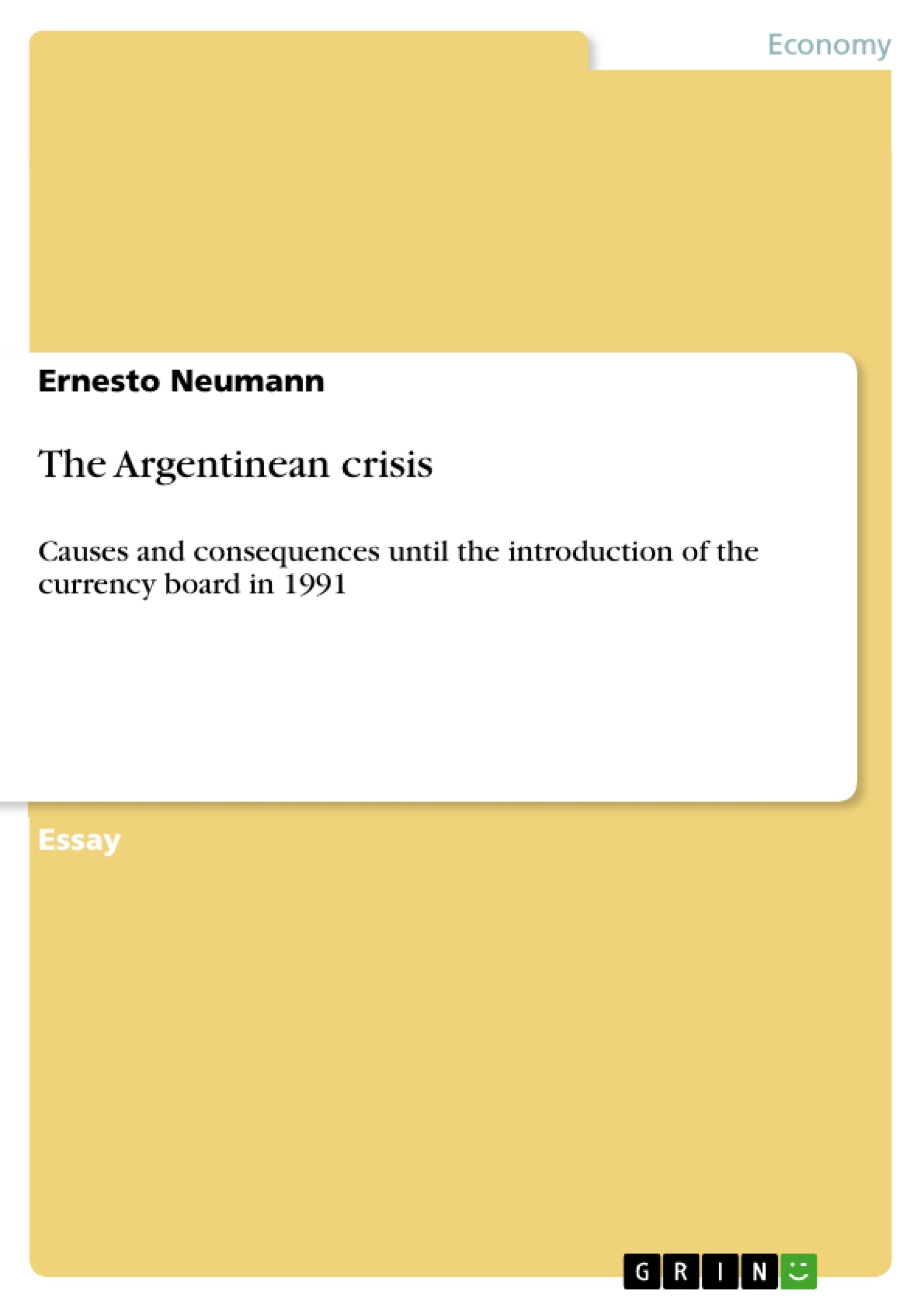In this essay I am going to talk about the Argentinean economy crisis and its political and economic causes and consequences until the introduction of the currency board in 1991. I am going to point out why the political processes in Argentina had a
negative effect on the whole economy of this country. As from 1880 an economic upturn began in Argentina, caused by a continuously
increasing and enduring export of agricultural products which continued, interrupted by the years of World War I, until shortly after the outbreak of the Great Depression, in 1929.
Until the world economic crisis in 1929, Argentina’s economic policy was mainly focused on agrarian export, basically to Europe, Great Britain. The demand for agrarian products and raw materials by industrialized countries increased after the Great Depression – except between 1929 and 1930, when Great Britain preferred to
import products from its former colonies Canada and Australia and closed its mind towards alternative markets like Argentina’s.
In this era of Argentina’s history, when GDP grew permanently, extremely in comparison to the international average, and when foreign investors started to invest their capital, also a wave of immigrants arrived at this part of South-America. Argentina was investing in infrastructure and quickly became to the most modernized country of this continent and started the beginning of industrialization. Due to foreign investments and immigration, Argentina was able to increase the agriculturally used acreage. This situation resulted in an ongoing economical growth. By the middle of the 19th century Argentina had the biggest economy worldwide. Until 1914, 70% of the agricultural products were exported - 30% of the GDP! The WWI got Argentina’s economy into trouble as foreign investors took their capital back to invest it in the military industry. That was the beginning of the strategy of ISI (Import substitution industrialization). In 1929 Argentina became one of the biggest exporters for deep-frozen meat, corn
and other agricultural products worldwide. At this time Argentina was the richest country in the world.
A popular phrase of this time was “rich like an Argentine”
[...]
Inhaltsverzeichnis (Table of Contents)
- The Argentinean Crisis
- The ISI Policy (1930-1966)
- The Argentinean Crisis (1976-1989)
- The Menem Government (1989-1991)
- The Introduction of the Currency Board (1991)
Zielsetzung und Themenschwerpunkte (Objectives and Key Themes)
This essay explores the Argentinean economic crisis and its political and economic causes and consequences until the introduction of the currency board in 1991. The essay aims to explain the impact of political processes on the Argentinean economy.
- The evolution of Argentina's economic policies from the early 20th century to the 1990s
- The role of import substitution industrialization (ISI) in Argentina's economic development
- The impact of political instability and economic mismanagement on Argentina's economic performance
- The introduction of the currency board as a response to Argentina's economic crisis
- The influence of the "Washington Consensus" on Argentina's economic reforms
Zusammenfassung der Kapitel (Chapter Summaries)
The essay begins by tracing Argentina's economic development from the late 19th century, highlighting the growth fueled by agricultural exports and foreign investment. It discusses the transition to the ISI policy following World War I and the subsequent economic growth in the 1940s and 1950s.
The text then examines the period between 1976 and 1989, characterized by political violence, rising debt, and declining economic growth. It describes the economic crisis of 1989, marked by hyperinflation and declining foreign exchange reserves.
The essay concludes by focusing on the Menem government and the introduction of the currency board in 1991. It explores the reforms undertaken by Menem, including privatization, deregulation, and liberalization of trade. The essay emphasizes the role of the "Washington Consensus" in shaping these reforms.
Schlüsselwörter (Keywords)
The main keywords and focus topics of this text are: Argentinean economy, economic crisis, political instability, import substitution industrialization (ISI), currency board, Washington Consensus, privatization, deregulation, trade liberalization.
- Quote paper
- Ernesto Neumann (Author), 2008, The Argentinean crisis, Munich, GRIN Verlag, https://www.grin.com/document/119043



